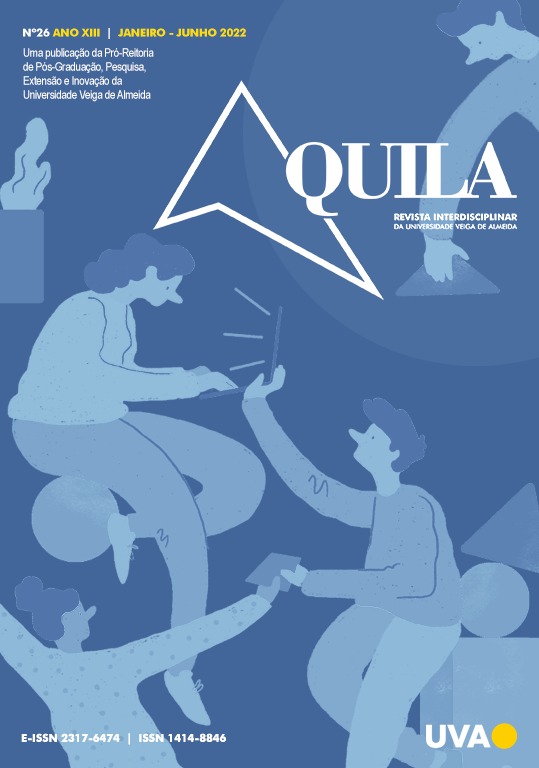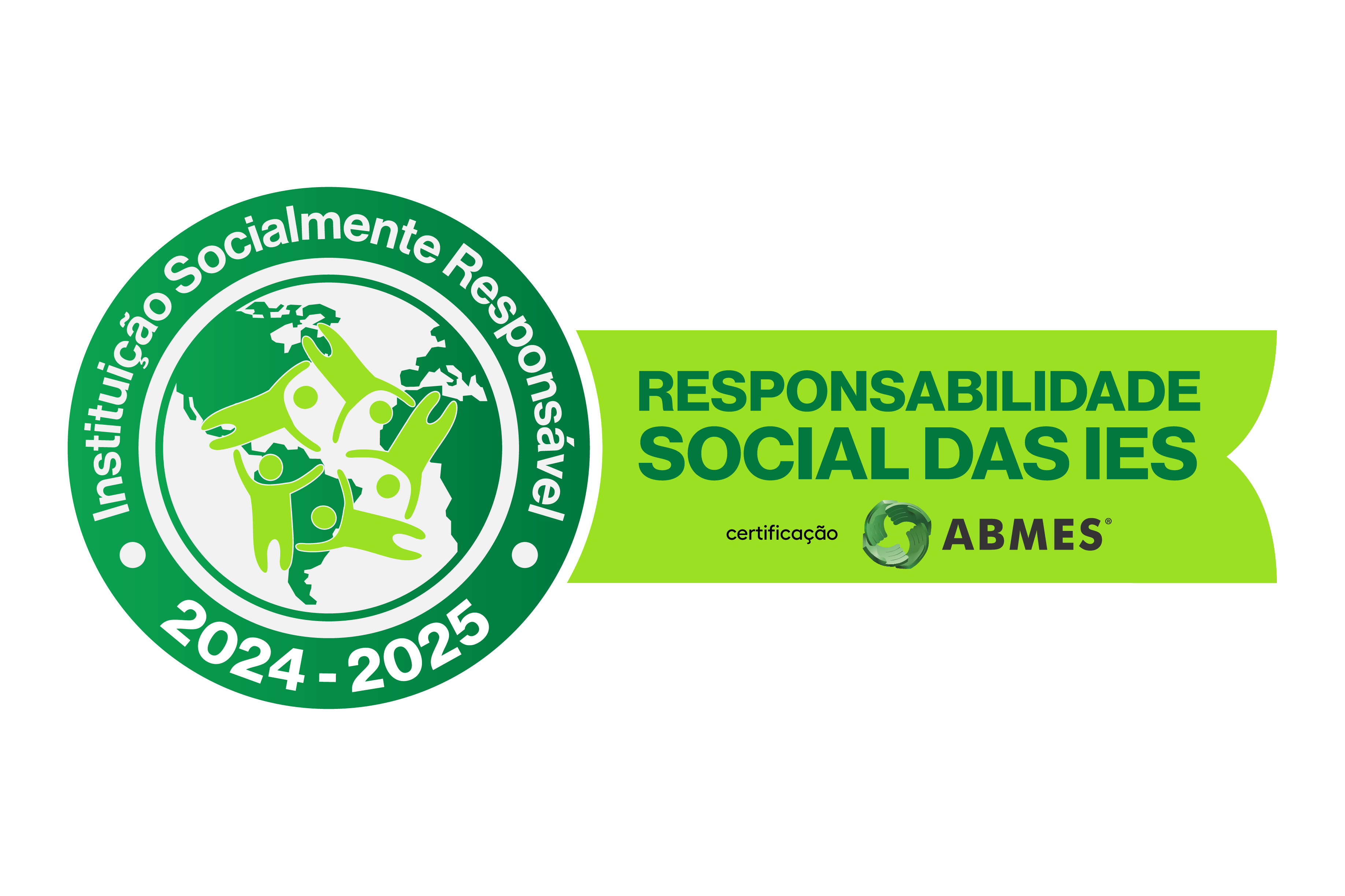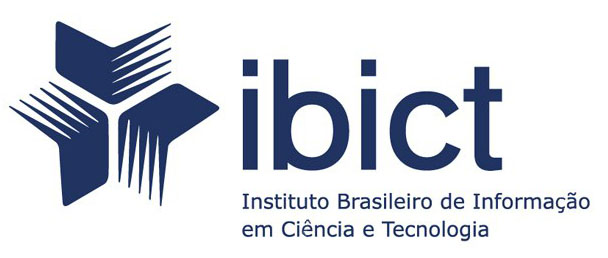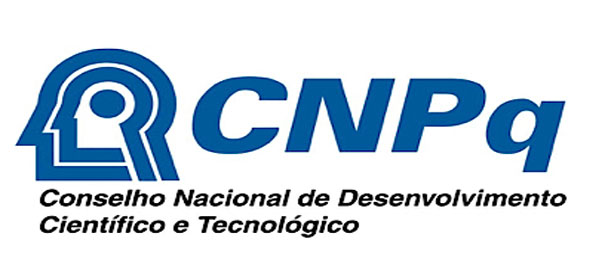Contamination of effluents with amoxicillin: environmental consequences and effective methods of removal
Contamination of effluents with amoxicillin: environmental consequences and effective methods of removal
Keywords:
Effluent treatment, Removal, AmoxicillinAbstract
For consecutive decades, there has been an intensification of pollution generated by human activities. Effluents are discharged every day, if not untreated, then partially treated into receiving water bodies, causing serious damage to the environment. Among these pollutants, pharmaceuticals raise great concern since they can be resistant even to conventional effluent treatment processes, highlighting the problem of inadequate treatment for these substances.
This bibliographic study surveyed 38 articles, which underwent rigorous selection, leaving only 12 works that met the prerequisites established for this research. The objective was to review the literature and analyze the effluent treatment methods used for the removal and degradation of the beta-lactam group antibiotic, amoxicillin.
Most of the selected studies conducted their analyses on artificially contaminated effluents, using techniques such as adsorption, advanced oxidative processes (AOPs), constructed wetlands, bioreactors with submerged membranes, activated carbon filters, and hydrolysis. It is important to note that each article employed very specific techniques, which explains the differing results found even in similar methods.
The analysis showed that among the methods observed, only the traditional oxidation process with Fenton reagent and the alkaline hydrolysis removal method, with a pH of 12.5 over 60 minutes, achieved complete removal (100%) of the antibiotic.
At the other end, it was observed that the antibiotic removal technique via constructed wetlands reached a minimum removal rate of 15%, and the AOP with natural photolysis over 360 minutes achieved a removal of 24%.
These findings highlight the importance of combining sewage treatment methods to achieve greater purity of the effluent released into the environment.
Downloads
References
ABBASSI, B. E. et al. Antibiotics in wastewater: Their degradation and effect on wastewater treatment efficiency. Journal of Food, Agriculture and Environment, v. 14, n. 3–4, p. 95–99, 2016.
ANDREOZZI, R.; CAPRIO, V.; CINIGLIA, C.; CHAMPDORÉ, M.; GIUDICE, R.; MAROTTA, R.; ZUCCATO, E. Antibiotics in the environment: occurrence in Italian STPs, fate, and preliminary assessment on algal toxicity of amoxicillin. Environmental Science and Technology, v. 38, n. 24, p. 6832–6838, 2004.
ARAUJO, Pricila de Souza. Utilização de bentonita como adsorvente na remoção do antibiótico amoxicilina em efluentes. João Pessoa, 2019.
BARCZA, Marcos Villela. Hidrólise. Escola de Engenharia de Lorena, EEL. USP.
BHATNAGAR, A.; SILLANPÄÄ, M. Utilization of agro-industrial and municipal waste materials as potential adsorbents for water treatment—A review. Chem. Eng. J. 157 (2010) 277-296.
BILA, D.M., DEZOTTI, M. Fármacos no meio ambiente. Quim Nova 26, São Paulo, 2003.
BORRELY S.I.; CAMINADA S.M.L.; PONEZI A.N.; DOS SANTOS D.R.; SILVA V.H.O. Contaminação das águas por Resíduos de Medicamentos: Ênfase ao Cloridrato de Fluoxetina. Mundo da Saúde, v. 36, n. 4, p. 556-563, 2012.
BOUND, J.P., VOULVOULIS, N., 2004. Pharmaceuticals in the aquatic environment – a comparison on risk assessment strategies. Chemosphere 56, 1143-1155.
BOUND, Jonathan & Voulvoulis, Nikolaos. (2006). Household Disposal of Pharmaceuticals as a Pathway for Aquatic Contamination in the United Kingdom. Environmental Health Perspectives, 113, 1705-11. doi:10.1289/ehp.8315.
BRASIL, Ministério da Saúde. Fundação Nacional de Saúde. Cartilha Wetlands construídos aplicados no tratamento de esgoto sanitário: recomendações para implantação e boas práticas de operação e manutenção. Florianópolis: UFSC, 2018. 56 p.: il. ISBN 978-85-8388-127-8.
BRITO, N. N. De.; SILVA, V. B. M. Processos Oxidativos Avançados e sua aplicação ambiental. Revista Eletrônica de Engenharia Civil, n. 3, v. 1, p. 36-47, 2012.
CARVALHO, E. V.; FERREIRA, E.; MUCINI, L.; SANTOS, C. Aspectos legais e toxicológicos do descarte de medicamentos. Revista Brasileira de Toxicologia, Campinas, v. 22, n. 1-2, 2009, p. 1-8.
COUTINHO, A.R.; BARBIERI, F.C.; PAVANI, P.A. Preparação de carvões ativados a partir de fibras de celulose. In: 2º Encontro Brasileiro de Adsorção, maio de 1998, Florianópolis, SC. Anais de trabalhos apresentados, UFSC, Brasil, p. 139-144, 2000.
COSTA JUNIOR, Ismael L.; PLETSCH, Adelmo L.; TORRES, Yohandra R. Ocorrência de Fármacos Antidepressivos no Meio Ambiente – Revisão. Revista Virtual de Química, v. 6, n. 5, p. 1408-1431, 2014.
CUNHA, Danieli Lima; PAULA, Lícia Murito; SILVA, Samuel Muylaert Camargo; BILA, Daniele Maia; FONSECA, Estefan Monteiro; OLIVEIRA, Jaime Lopes da Mota. Regulamentação do estrogênio sintético 17α-etinilestradiol em matrizes aquáticas na Europa, Estados Unidos e Brasil. Cadernos de Saúde Pública, v. 32, n. 3, p. 1-13, 2016.
DE MORAIS, J. L.; PERALTA-ZAMORA, P. Use of advanced oxidation processes to improve the biodegradability of mature landfill leachates. Journal of Hazardous Materials, v. 123, n. 1-3, p. 181-186, 2005.
DESCHAMPS, E. et al. Management of effluents and waste from pharmaceutical industry in Minas Gerais, Brazil. Brazilian Journal of Pharmaceutical Sciences, v. 48, n. 4, p. 727-736, 2012.
ELMOLLA, E. S.; CHAUDHURI, M. Photo-fenton treatment of antibiotic wastewater. Nature Environment and Pollution Technology, v. 9, n. 2, p. 365-370, 2010.
ERGUN, S. Fluid Flow Through Packed Columns Chemical. Eng. Progr., New York, vol. 48, p. 89-94, 1952.
FURLAN, F. R. Avaliação da eficiência do processo de Coagulação-floculação e adsorção no Tratamento de efluentes têxteis. Dissertação - UFSC, Florianópolis, 2008.
GHOLAMI, M. et al. Performance evaluation of reverse osmosis technology for selected antibiotics removal from synthetic pharmaceutical wastewater. Iranian Journal of Environmental Health Science & Engineering, v. 9, n. 1, p. 19, 2012.
GOLET, E. M.; ALDER, A. C.; HARTMANN, A.; TERNES, T. A.; GIGER, W. Trace determination of fluoroquinolone antibacterial agents in urban wastewater by solid-phase extraction and liquid chromatography with fluorescence detection. Analytical Chemistry, v. 73 (15), p. 3632-3638, 2001.
HALLING-SØRENSEN, B.; LÜTZHOFT, H.C.H.; ANDERSEN, H.R.; INGERSLEV, F. Environmental risk assessment of antibiotics: comparison of mecillinam, trimethoprim and Ciprofloxacin. J Antimicrob Chemother, v. 46, p. 53-58, 2000.
HERNANDO, M. D. et al. Environmental risk assessment of pharmaceutical residues in wastewater effluents, surface waters and sediments. Talanta, 69, 334-342, 2006.
HIRVONEN, A.; TUHKANEN, T.; KALLIOKOSKI, P. Treatment of TCE- and PCE contaminated groundwater using UV/H2O2 and O3/H2O2 oxidation processes. Wat. Sci. Tech., v. 33, p. 67-73, 1996.
HOLBROOK, R. D.; MASSIE, K. A.; NOVAK, J. T. A Comparison of Membrane Bioreactor and Conventional-Activated-Sludge Mixed Liquor and Biosolids Characteristics. Water Environmental Research, v. 77, p. 323-330, 2005.
HOMEM, V. M. F. C. Tecnologias Alternativas de Remoção de Antibióticos De Águas Contaminadas. 2011. Tese de Doutorado em Engenharia Química. Universidade do Porto, Porto, 2011.
KADLEC, R.H. & KNIGHT, R.L. Treatment Wetlands. CRC Press, Boca Raton, Fl., 893pp. 1996.
KHETAN, S. K.; COLLINS, T. J. Human pharmaceuticals in the aquatic environment: a challenge to green chemistry. Chemical Review, 107, 2319-2364, 2007.
KOLPIN, D. W.; FURLONG, E. T.; MEYER, M. T.; THURMAN, E. M.; ZAUGG, S. D.; BARBAR, L. B.; BUXTON, H. T. Pharmaceuticals, hormones, and other organic wastewater contaminants in U. S. streams, 1999-2000: a national reconnaissance. Environmental Science & Technology, v. 36, p. 1202-1211, 2002.
KOROLKOVAS, Andrejus e FRANÇA, Francisco F. de A. C. de. Dicionário Terapêutico Guanabara. 15 ed. Rio de Janeiro: Guanabara Koogan, 2008.
KÜMMERER, K. Pharmaceuticals in the environment. Alemanha: Springer, Alemanha, 2001a.
KÜMMERER, K. Drugs in the environment: emission of drugs, diagnostic aids and disinfectants into wastewater by hospitals in relation to other sources – a review. Chemosphere, 45, 957-969, 2001b.
LONGHIN, S. R. Estudo de degradação dos antibióticos beta-lactâmicos amoxicilina e ampicilina e avaliação da toxicidade e biodegradabilidade dos seus produtos. 2008. Tese (Doutorado em Química) - Instituto de Química, Universidade de Brasília, Brasília, 2008.
LOPES, B. C. Efeitos da fotólise e fotocatálise sobre a dinâmica de fármacos presentes em esgoto sanitário tratado biologicamente. 2014. Dissertação (Mestrado em Saneamento, Meio Ambiente e Recursos Hídricos, Universidade Federal de Minas Gerais, Belo Horizonte, 2014).
LOPES, Lara Mayza Almeida et al. O uso inadequado dos antimicrobianos: revisão de literatura. Revista Científica Multidisciplinar Núcleo do Conhecimento. Ano 04, Ed. 01, Vol. 05, pp. 37-51. Janeiro de 2019. ISSN:2448-0959.
MELO, S. A. S.; TROVÓ, A. G.; BAUTITZ, I. R.; NOUGUEIRA, R. F. P. Degradação de fármacos residuais por processos oxidativos avançados. Química Nova. Sociedade Brasileira de Química, v. 32, n. 1, p. 188-197, 2009.
MARCELINO, Rafaela Brito Portela. Aplicação de processos oxidativos avançados para o tratamento de efluente da produção de antibióticos. Universidade Federal de Minas Gerais, Belo Horizonte, 2014.
María Hijosa-Valsero, Guido Fink, Michael P. Schlüsener, Ricardo Sidrach-Cardona, Javier Martín-Villacorta, Thomas Ternes, Eloy Bécares. Remoção de antibióticos de águas residuais urbanas por otimização de áreas úmidas construídas. Chemosphere 83, 2011, 713–719.
Marques, Eliane de Melo; Isique, William D.; Minillo, Alessandro; Tangerino, Edson P. Remoção de ciprofloxacina, ampicilina, amoxicilina e cefalexina da água em filtros de carvão biológico em condições de laboratório. FAPESP, 2009.
MATSUBARA, Milena Emy; Coelho, Lúcia Helena Gomes; Subtil, Eduardo Lucas. Remoção do antibiótico amoxicilina por Biorreatores com membranas submersas (MBRs). ABES - Associação Brasileira de Engenharia Sanitária e Ambiental; AESABESP - Associação dos Engenheiros da Sabesp. Bangú, Santo André - SP. Congresso ABES, FENASAN 2017.
NOGUEIRA, R. F. P.; JARDIM, W. F. Heterogeneous photocatalysis and its environmental applications. Química Nova, v. 21, n. 1, p. 69-72, 1998.
NOLL, K.E.; GOUNARIS, V.; HOU, W.S. Adsorption technology for air and water pollution control. Lewis Publishers, INC. USA, 1992.
ORGANIZAÇÃO MUNDIAL DE SAÚDE [OMS]. Antimicrobial resistance: global report on surveillance. Organização Mundial de Saúde [OMS]. Genebra: abr. 2014, p. 257.
ORGANIZAÇÃO MUNDIAL DE SAÚDE [OMS]. Report on surveillance of antibiotic consumption: 2016-2018 early implementation.
PAN, X.; DENG, C.; ZHANG, D.; WANG, J.; MUA, G.; CHEN, Y. Toxic effects of amoxicillin on the photosystem II of Synechocystis sp. characterized by a variety of in vivo chlorophyll fluorescence tests. Aquatic Toxicology, v. 89, p. 207-213, 2008.
Prateek Pachauri, Rajendra Falwariya, Sangeeta Vyas, Monika Maheshwari, Raj K. Vyas, E. A. B. Gupta. Remoção de amoxicilina em águas residuais usando adsorção por Carvão Ativado em Pó e Granular e Oxidação com Peróxido de Hidrogênio. Nature EMBIENTE e Pollution Technology. International Quarterly Scientific Journal. Vol. 8 n°3 pp.
PLEITER et al. Toxicity of five antibiotics and their mixtures towards photosynthetic aquatic organisms: Implications for environmental risk assessment. Water Research, 47, 2050-2064, 2013.
ROCHA, A. C. L.; KLIGERMAN, D. C.; OLIVEIRA, J. L. M. Panorama da pesquisa sobre tratamento e reúso de efluentes da indústria de antibióticos. Saúde em Debate, v. 43, p. 165-180, 2019.
Sá, T. A. P. de; NETO, J. R. O.; Ribeiro, T. S. S. Métodos de Remoção do Antibiótico Amoxicilina em Solução via Hidrólises Ácida e Alcalina. Revista Processos Químico. Jan / Jun de 2018.
SCARCELA, M. A. A.; MUNNIZ, J. W. A.; CIRQUEIRA, J. Z. Investigação do uso indiscriminado de amoxicilina em crianças na faixa etária de 2 a 10 anos. Cenarium Pharmacêutico, v. 4, n° 4, 2011.
SILVA, L. P. Modificação e imobilização de TiO2 visando a degradação de compostos orgânicos poluentes via o processo de fotocatálise heterogênea. Dissertação (Mestrado em Química) – Instituto de Química, USP, 2007.
SOUZA, Raquel Cardoso de. Avaliação da remoção de amoxicilina e cefalexina da urina humana por oxidação avançada (H2O2/UV) com vistas ao saneamento ecológico. Dissertação - UFSC, Centro Tecnológico, Florianópolis, 2013.
STACKELBERG, P. E.; FURLONG, E. T.; MEYER, M. T.; ZAUGG, S. D.; HENDERSON, A. K.; REISSMAN, D. B. Persistence of pharmaceutical compounds and other organic wastewater contaminants in a conventional drinking-water treatment plant. Science of the Total Environment, v. 329, p. 99-113, 2004.
TERNES, T. A. Occurrence of drugs in German sewage treatment plants and rivers. Water Research, 32, 3245-3260, 1998.
VASCONCELOS, O. M. S. R. Degradação do antibiótico amoxicilina em efluente de indústria farmacêutica. Tese de Doutorado. UFMG, Belo Horizonte, 2011.
VICENTIN, Bruna Martins. Estudo da remoção do antibiótico amoxicilina em meio aquoso: utilização da perlita expandida e casca de pistache in natura como adsorventes. Dissertação - UTFPR, Pato Branco, 2019.
VINODGOPAL, K.; PELLER, J.; MAKOGON, O.; KAMAT, P.V. Ultrasonic mineralization of reactive textile azo dye, Remazol Black B. Water Research, v. 32, p. 3646-3650, 1998.
WAGNER, M. C.; COSTA JUNIOR, I. L.; MEES, J. B. R.; QUITAISKI, P. P. Ocorrência dos fármacos amoxicilina e cafeína em esgoto doméstico e águas superficiais. In: Congresso ABES/ FENASAN 2017, São Paulo, 2017. Anais do ABES/ FENASAN 2017, 2017.











